| February 1, 2009
Wave Mechanics Union: Second Season: Progressive
& Classic Rock as Jazz
HX Music
Format: CD
| Musical Performance |
     |
| Sound Quality |
     |
| Overall Enjoyment |
     |
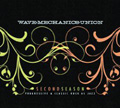 Halfway through Wave Mechanics Union’s arrangement of the
Who’s "Won’t Get Fooled Again," I thought there was a good chance my
reaction to the rest of Second Season, the band’s collection of jazz
interpretations of rock tunes, would be tepid. But after hearing their takes on
Queen’s "Killer Queen" and Led Zeppelin’s "The Rain Song," I
was warming up to the disc, and by the end I was charmed. The arrangements, by drummer
Ralph Johnson and trombonist Ryan Fraley, are witty and well thought out, and the song
choices are attractively unpredictable; only "Eleanor Rigby" is hackneyed. King
Crimson’s "Elephant Walk" retains its swaggering sense of fun while
swinging hard, and "The Great Gig in the Sky" sounds as it might have if Pink
Floyd had been drinking martinis instead of taking something heavier. Singer Lydia McAdams
is a delight throughout, approaching each song with freshness and passion. The recording,
by Fraley and Johnson, clearly separates the sections of the band in the large-ensemble
tracks, and seems a bit crowded only on the Police’s "De Do Do Do, De Da Da
Da." I would have brought McAdams’ voice a bit more forward in the mix, but
overall, the recording sounds remarkably good. I even found myself liking "Won’t
Get Fooled Again.". . . Joseph Taylor Halfway through Wave Mechanics Union’s arrangement of the
Who’s "Won’t Get Fooled Again," I thought there was a good chance my
reaction to the rest of Second Season, the band’s collection of jazz
interpretations of rock tunes, would be tepid. But after hearing their takes on
Queen’s "Killer Queen" and Led Zeppelin’s "The Rain Song," I
was warming up to the disc, and by the end I was charmed. The arrangements, by drummer
Ralph Johnson and trombonist Ryan Fraley, are witty and well thought out, and the song
choices are attractively unpredictable; only "Eleanor Rigby" is hackneyed. King
Crimson’s "Elephant Walk" retains its swaggering sense of fun while
swinging hard, and "The Great Gig in the Sky" sounds as it might have if Pink
Floyd had been drinking martinis instead of taking something heavier. Singer Lydia McAdams
is a delight throughout, approaching each song with freshness and passion. The recording,
by Fraley and Johnson, clearly separates the sections of the band in the large-ensemble
tracks, and seems a bit crowded only on the Police’s "De Do Do Do, De Da Da
Da." I would have brought McAdams’ voice a bit more forward in the mix, but
overall, the recording sounds remarkably good. I even found myself liking "Won’t
Get Fooled Again.". . . Joseph Taylor
|
Chopteeth: Afrofunk Big Band
GriGri grigri001
Format: CD
| Musical Performance |
     |
| Sound Quality |
     |
| Overall Enjoyment |
     |
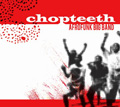 The title of the album is Afrofunk Big Band, and a quick
headcount of this hyper-rhythmic ensemble shows that Chopteeth aren’t kidding. Big is
the band -- 15 pieces -- and big is the sound. The group is based in the Washington, DC,
area, but its members have been culled from around world, including the US, Kenya, and
Romania. Their unifying force and inspiration are the music and legacy of the originator
of Afrobeat, the Nigerian-born Fela Kuti. Chopteeth has a good grasp of the style that
Kuti and others made popular in the 1970s, and here delivers 10 tracks that pulse with
grooves undeniably reminiscent of the founder. Driving percussion and bleating horns
provide the foundation for electro-fused guitars and chunky keyboards. "Wili
Nineh," based on a traditional Malian initiation song, features griot singer Cheick
Hamala Diabate bequeathing a rite-of-passage blessing on the band, essentially informing
that, while not all of the members are descendants of African musical ancestors, the music
they’ve created is authentic. Instrumentals such as "Snake Eyes" and
"Herky Jerk" unite pan-African rhythms with rock’n’roll licks in dank,
groovy blends. Despite the size of the band and the smallness of the studio in which they
recorded, this album closely captures what I would expect from a live Chopteeth
performance. Be prepared to be overtaken by an irresistible urge to dance every time you
listen. . . . Shannon Holliday The title of the album is Afrofunk Big Band, and a quick
headcount of this hyper-rhythmic ensemble shows that Chopteeth aren’t kidding. Big is
the band -- 15 pieces -- and big is the sound. The group is based in the Washington, DC,
area, but its members have been culled from around world, including the US, Kenya, and
Romania. Their unifying force and inspiration are the music and legacy of the originator
of Afrobeat, the Nigerian-born Fela Kuti. Chopteeth has a good grasp of the style that
Kuti and others made popular in the 1970s, and here delivers 10 tracks that pulse with
grooves undeniably reminiscent of the founder. Driving percussion and bleating horns
provide the foundation for electro-fused guitars and chunky keyboards. "Wili
Nineh," based on a traditional Malian initiation song, features griot singer Cheick
Hamala Diabate bequeathing a rite-of-passage blessing on the band, essentially informing
that, while not all of the members are descendants of African musical ancestors, the music
they’ve created is authentic. Instrumentals such as "Snake Eyes" and
"Herky Jerk" unite pan-African rhythms with rock’n’roll licks in dank,
groovy blends. Despite the size of the band and the smallness of the studio in which they
recorded, this album closely captures what I would expect from a live Chopteeth
performance. Be prepared to be overtaken by an irresistible urge to dance every time you
listen. . . . Shannon Holliday
|
New York Electric Piano: King
Mystery
Buffalo Puppy BP56-006
Format: CD
| Musical Performance |
     |
| Sound Quality |
     |
| Overall Enjoyment |
     |
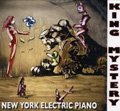 New York Electric Piano is a trio comprising Pat Daugherty on
piano, Tim Givens on bass, and Aaron Comess on drums. For its fourth release, King
Mystery, the band adds Till Behler on saxes and flutes, singer Deanna Kirk, and
two musicians whose specialty is electronics: Leon Gruenbaum on samchillian (an instrument
of his own invention), and Mal Stein, who contributes soundscapes. Daugherty’s Fender
Rhodes on many of these tracks gives King Mystery an undercurrent of 1970s fusion,
but overall the disc doesn’t feel dated, in large part because Gruenbaum and Stein
weave unusual tones and textures throughout. In short, King Mystery is jazz you can
dance to. Daugherty writes tunes with strong grooves, which Comess (who drums for the Spin
Doctors) responds to with subtlety and drive. Givens is rock solid, intelligently
supporting even the most hectic tunes. Songs like "Road to Newport" show the
band’s straight-ahead jazz chops, while "10 to 11" and "Temple
Tantrum" drop hints of Herbie Hancock, Weather Report, and Bill Bruford’s
Earthworks. Two tracks feature charming vocals, though after that the band gets back to
playing on its own pretty quickly. The recording feels a bit closed-in; this music needs
more aural space. Despite that quibble, King Mystery is an intelligent, fun jazz
disc. . . . Joseph Taylor New York Electric Piano is a trio comprising Pat Daugherty on
piano, Tim Givens on bass, and Aaron Comess on drums. For its fourth release, King
Mystery, the band adds Till Behler on saxes and flutes, singer Deanna Kirk, and
two musicians whose specialty is electronics: Leon Gruenbaum on samchillian (an instrument
of his own invention), and Mal Stein, who contributes soundscapes. Daugherty’s Fender
Rhodes on many of these tracks gives King Mystery an undercurrent of 1970s fusion,
but overall the disc doesn’t feel dated, in large part because Gruenbaum and Stein
weave unusual tones and textures throughout. In short, King Mystery is jazz you can
dance to. Daugherty writes tunes with strong grooves, which Comess (who drums for the Spin
Doctors) responds to with subtlety and drive. Givens is rock solid, intelligently
supporting even the most hectic tunes. Songs like "Road to Newport" show the
band’s straight-ahead jazz chops, while "10 to 11" and "Temple
Tantrum" drop hints of Herbie Hancock, Weather Report, and Bill Bruford’s
Earthworks. Two tracks feature charming vocals, though after that the band gets back to
playing on its own pretty quickly. The recording feels a bit closed-in; this music needs
more aural space. Despite that quibble, King Mystery is an intelligent, fun jazz
disc. . . . Joseph Taylor
|
Beirut: New Recordings from the
State of Oaxaca
Beirut: March of the Zapotec
Realpeople: Holland
Pompeii POMP01
Format: 2 EP CDs
| Musical Performance |
     |
| Sound Quality |
     |
| Overall Enjoyment |
     |
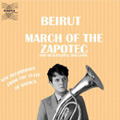 Beirut’s The Flying
Club Cup (2007) is an aural odyssey. Listen to it and be transported to Parisian
cafes, a fanciful circus, or high above the clouds looking down from a hot-air balloon. It
launched the band into near-overnight stardom, if only the fickle, nearly-over-in-a-night
stardom of the indie underground. Overtaken by their unexpected success, the band canceled
a spring 2008 European tour and retreated to Mexico for a Latin American holiday sans
stardom. Little was heard from them again until late 2008, when they announced
the February 19 release of a double-EP release on Pompeii Records under the
overall title New Recordings from the State of Oaxaca. Don’t call it a
comeback. Though packaged together, the two new discs are very different ventures released
under lead singer Zach Condon’s two different recording monikers, Beirut and
Realpeople, and are dichotomized by opposing themes: the Beirut EP, March of the
Zapotec, is a dogpile free-for-all of every acoustic instrument imaginable
times two, while Realpeople’s Holland unveils electrified, synth-laden
"bedroom recordings" from a pre-Beirut solo project by Condon. The six Beirut
tracks, conceived in Mexico, are aided by a regional (i.e., small village)
band of 17 members in addition to Beirut themselves, who contributed conceptually and in
the studio to the album’s production. The five Realpeople tracks, meanwhile, are
elaborate, self-indulgent arias intended "to give the listener a unique perspective
on yet another side of Zach’s artistic vision." The result is an unfortunate
hodge-podge of mariachi fusion paired with syrupy synth-pop and ardent 1980s-scene
exaltation. Unique? Yes. Artistic? Maybe. Recommended? No. . . . Shannon Holliday Beirut’s The Flying
Club Cup (2007) is an aural odyssey. Listen to it and be transported to Parisian
cafes, a fanciful circus, or high above the clouds looking down from a hot-air balloon. It
launched the band into near-overnight stardom, if only the fickle, nearly-over-in-a-night
stardom of the indie underground. Overtaken by their unexpected success, the band canceled
a spring 2008 European tour and retreated to Mexico for a Latin American holiday sans
stardom. Little was heard from them again until late 2008, when they announced
the February 19 release of a double-EP release on Pompeii Records under the
overall title New Recordings from the State of Oaxaca. Don’t call it a
comeback. Though packaged together, the two new discs are very different ventures released
under lead singer Zach Condon’s two different recording monikers, Beirut and
Realpeople, and are dichotomized by opposing themes: the Beirut EP, March of the
Zapotec, is a dogpile free-for-all of every acoustic instrument imaginable
times two, while Realpeople’s Holland unveils electrified, synth-laden
"bedroom recordings" from a pre-Beirut solo project by Condon. The six Beirut
tracks, conceived in Mexico, are aided by a regional (i.e., small village)
band of 17 members in addition to Beirut themselves, who contributed conceptually and in
the studio to the album’s production. The five Realpeople tracks, meanwhile, are
elaborate, self-indulgent arias intended "to give the listener a unique perspective
on yet another side of Zach’s artistic vision." The result is an unfortunate
hodge-podge of mariachi fusion paired with syrupy synth-pop and ardent 1980s-scene
exaltation. Unique? Yes. Artistic? Maybe. Recommended? No. . . . Shannon Holliday
|
Patti Smith: Dream of Life
Palm Pictures PALMOV 3166
Format: DVD
| Musical Performance |
     |
| Sound Quality |
     |
| Picture Quality |
     |
| Overall Enjoyment |
     |
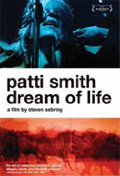 When, in 1975, Patti Smith released her first album, Horses
-- a key record in the development of punk rock -- she was a New York City poet and
occasional record reviewer. Smith’s life as a writer, painter, singer, and political
provocateur are on display in Dream of Life, photographer Steven Sebring’s
highly impressionistic portrait of her. The film, shot mostly in grainy black and white,
is filled with lovely images, but it’s not linear. It tells Smith’s story
through a series of disconnected incidents shot over 11 years, with a small bit of context
provided at the beginning, when Smith recounts the story of her arrival in New York, her
friendship with the late photographer Robert Mapplethorpe, and her involvement in the
city’s art scene. For Smith, art is everything, and in Dream of Life she
discusses poetry, music, and painting in reverent tones. She holds French poet Arthur
Rimbaud and the Beats (William S. Burroughs, Allen Ginsberg, Gregory Corso) in especially
high regard, and pays tribute to those departed friends and influences as well as to her
late husband, Fred Smith of the MC5. Patti Smith presents the permanence of art as an
antidote to life’s swift passage, and Dream of Life celebrates her childlike
openness to experience. The film is overlong by about 20 of its 109 minutes, a few scenes
meander, and some may wish to skip the political rants. Nonetheless, it’s a
fascinating portrait of an unusual artist. . . . Joseph Taylor When, in 1975, Patti Smith released her first album, Horses
-- a key record in the development of punk rock -- she was a New York City poet and
occasional record reviewer. Smith’s life as a writer, painter, singer, and political
provocateur are on display in Dream of Life, photographer Steven Sebring’s
highly impressionistic portrait of her. The film, shot mostly in grainy black and white,
is filled with lovely images, but it’s not linear. It tells Smith’s story
through a series of disconnected incidents shot over 11 years, with a small bit of context
provided at the beginning, when Smith recounts the story of her arrival in New York, her
friendship with the late photographer Robert Mapplethorpe, and her involvement in the
city’s art scene. For Smith, art is everything, and in Dream of Life she
discusses poetry, music, and painting in reverent tones. She holds French poet Arthur
Rimbaud and the Beats (William S. Burroughs, Allen Ginsberg, Gregory Corso) in especially
high regard, and pays tribute to those departed friends and influences as well as to her
late husband, Fred Smith of the MC5. Patti Smith presents the permanence of art as an
antidote to life’s swift passage, and Dream of Life celebrates her childlike
openness to experience. The film is overlong by about 20 of its 109 minutes, a few scenes
meander, and some may wish to skip the political rants. Nonetheless, it’s a
fascinating portrait of an unusual artist. . . . Joseph Taylor |
|
|